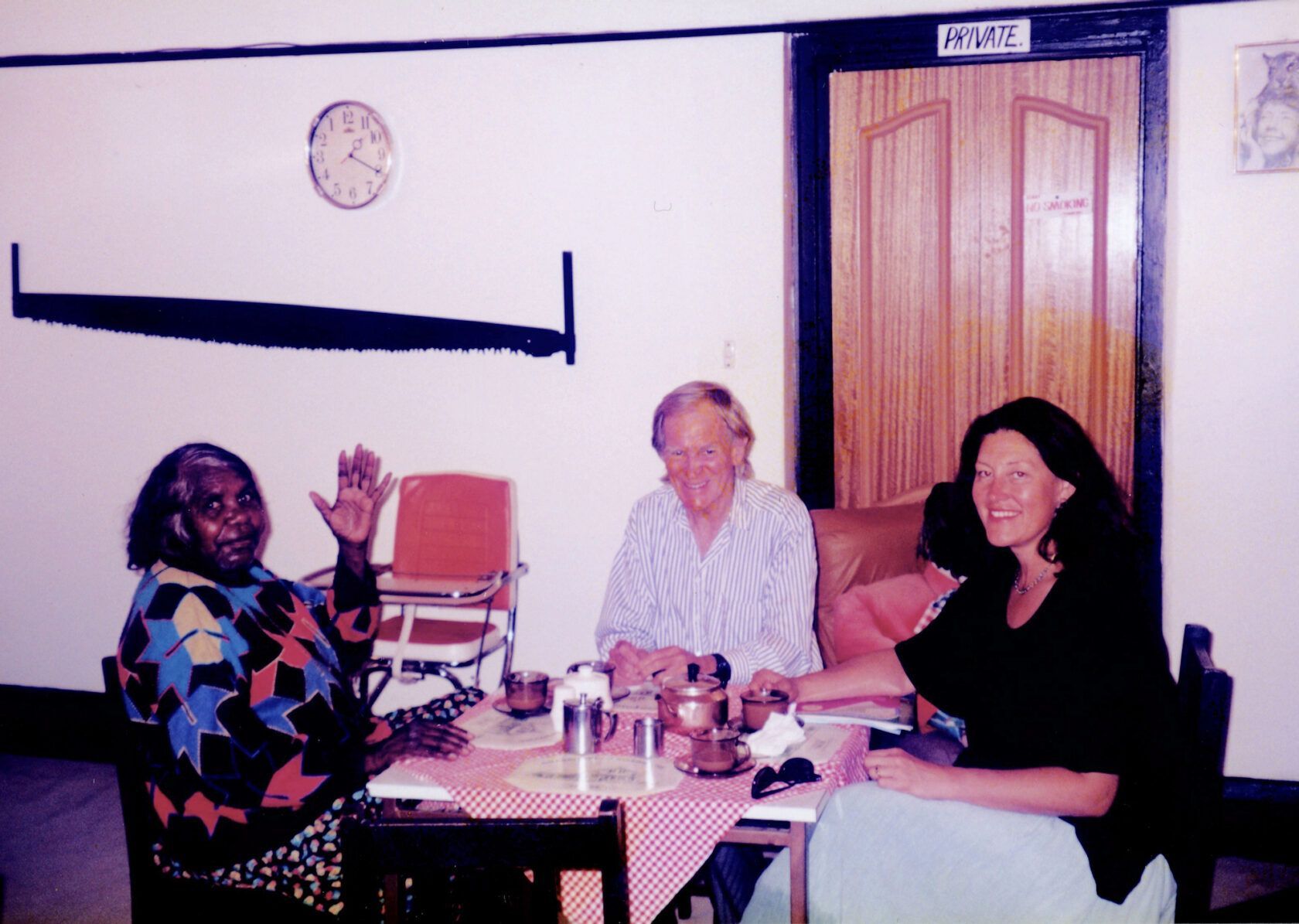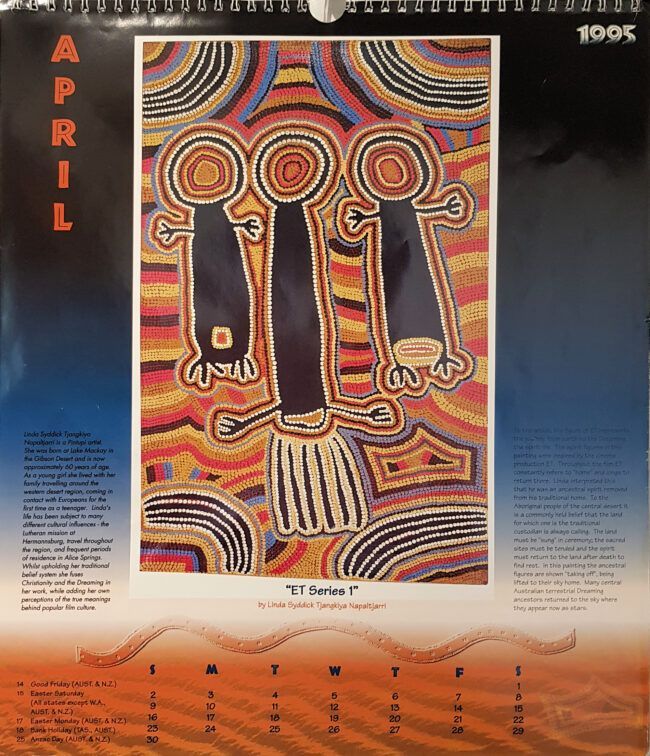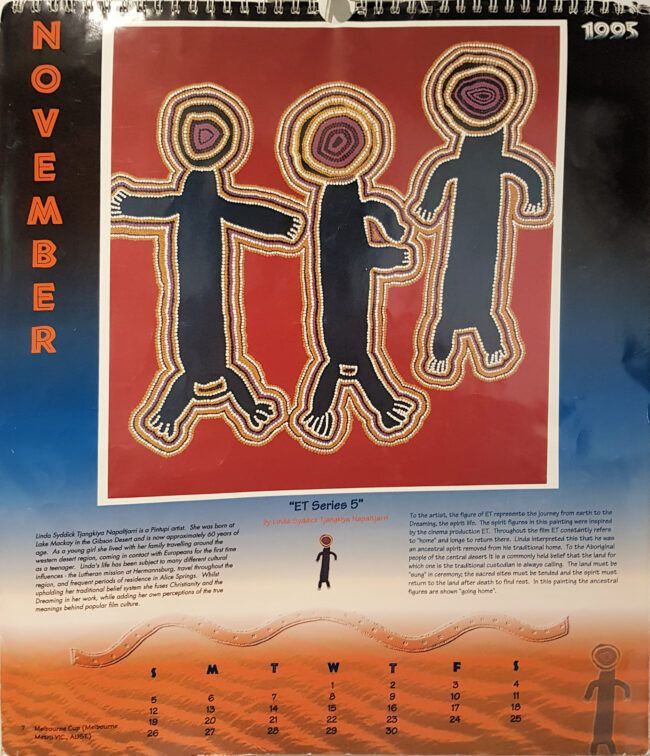Fascinating to spend more time with them and be a fly on the wall and observe their interaction. Occasionally when I would be in the kitchen preparing food I would look out and see Linda in her corner with her tape recorder to her ear listening to Pitjanjatjara women singing corroboree and wailing along in tune and Russell sitting outside drinking black coffee and smoking cigarettes, singing the theme song to “Babe”. Linda, we know can be charming and engaging when she is relaxed and sober and impossible to reason with and quite manipulative when she has been drinking.
3. Linda and Russell's Visit
Continuing our journey into the extraordinary world created by Linda Syddick Napaltjarri with extracts by her partner Russell Sim.
Chapter 3: Linda and Russell have now left, putting off in their old dusty station-wagon. They enjoyed their stay but were eager to return home to their farm house in the Barossa.
6th of March 1996
“The” book - Linda and Russell’s visit
Linda and Russell have now left, putting off in their old dusty station-wagon. They enjoyed their stay but were eager to return home to their farm house in the Barossa. What a couple! You would have smiled Bryce, she arrived all spruced up with a basket full of tomatoes she had grown (plus the usual stash of plastic bags full of cooked meat and white bread in case she would starve). To think of Linda, the gardener, living in the Barossa Valley! How her destiny changed when she met Russell. And how his destiny changed when he met Linda! I couldn’t help thinking that there was the undercurrent for another book one day based on their lives, apart from the more promotional art catalogue style we are planning now.
Russell is the dark horse. He doesn’t divulge very much of his life easily as you know, preferring to push Linda forward but his background is interesting, starting his career as a dentist (following his father’s footsteps studying at age 16), and then living in regional Victoria (Horsham? - between VIC and SA) for 18 years. He then went to Melbourne as a child specialist but after a few years couldn’t bear it any longer. He said it was the most boring profession as it was only technical, very repetitive and demanded very little brain power. He returned to university, hoping to study psychiatry as he figured it would be a profession where he would use his brain and one that would enable him to work until he was very old as it was a non-physical position! However, he wasn’t accepted into medicine because his degree was “out-dated”.
When he had studied dentistry it was before the knowledge of DNA, so he was advised that he would have to start from scratch. So he studied science instead and got his PhD. This took him 4 years instead of 3 because he continued to work each morning as a dentist at the Melbourne gaol. He then went to a university in Washington, DC to do research. He was in the States about 3 years and then returned to Victoria where he did research at La Trobe University and/or RMlT (not completely sure dates and name of Universities - need to ask him more precise details). When funding for his project (researching certain genetic defects at birth) ran out, he applied for a position in Katherine where he worked in Aboriginal Health. After returning for a stint in Melbourne he came to Alice Springs to work for Congress as a dentist in 1987.
Following are some relaxed and candid moments from my collection of personal photographs.
In the following two photos, we meet the neighbours:
The followings photos show my visit to their house in the Barossa Valley in the village of Tarlee.
The following is an early beautifully detailed work by Linda Syddick. The spirits painted here represent the spirits that are depicted in the rock art at Tjindara (located in Western Australia), a place that is often visited by the Pintupi people. It has been estimated that the paintings found on the rock at Tjindara are at least fifteen thousand years old.
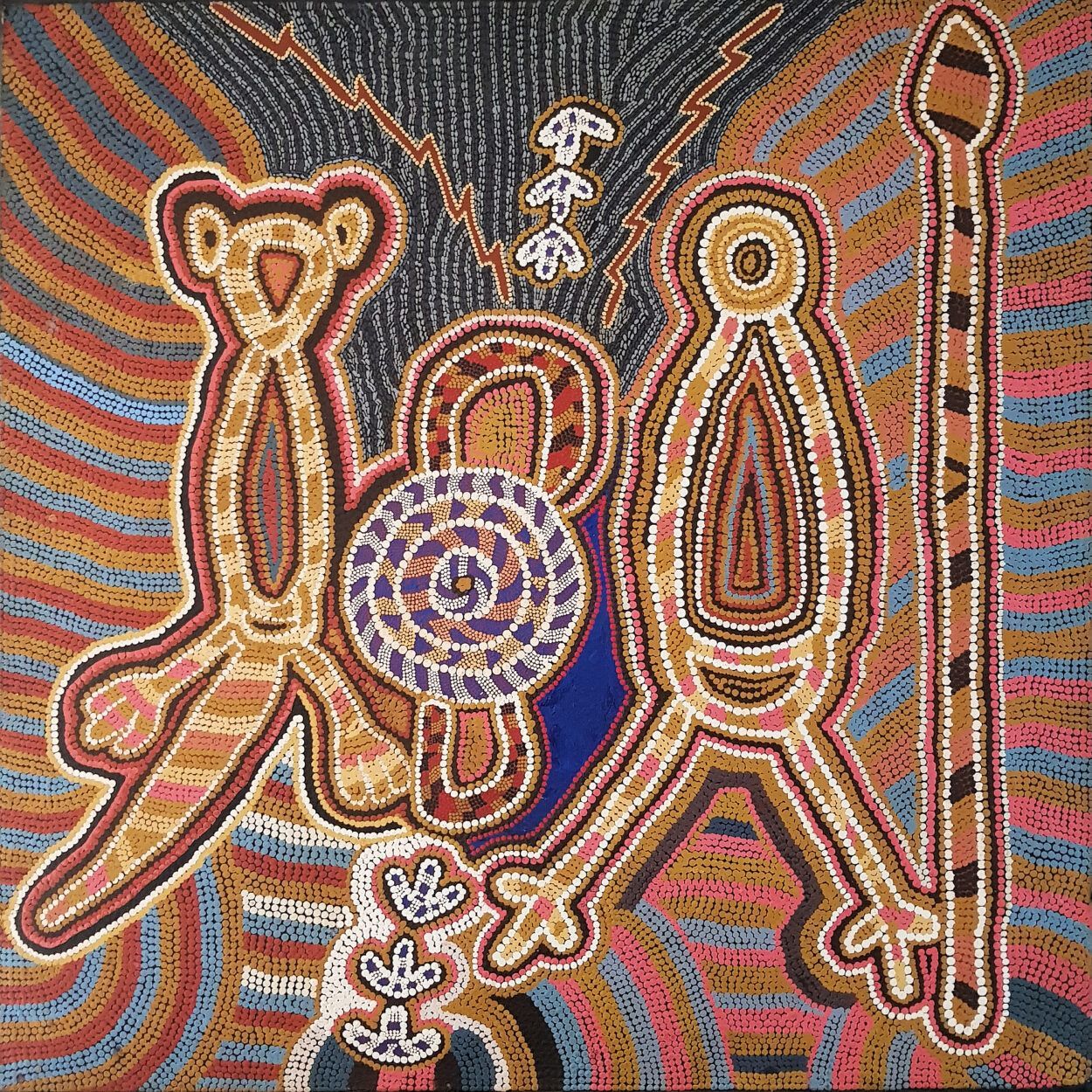
Emu and Kangaroo Ancestors at Lake Mackay
This painting image featured on the front cover of the 1995 Calendar Dreaming. There were another 2 within the calendar featuring ET. Also within the calendar are fellow artists from the Gallery Gondwana Studio including Dorothy Napangardi, Polly Napangardi Watson, Barney Daniels Tjungarrayi, Rosie Fleming Nangala and Peter Leo Tjakamarra from Utopia.
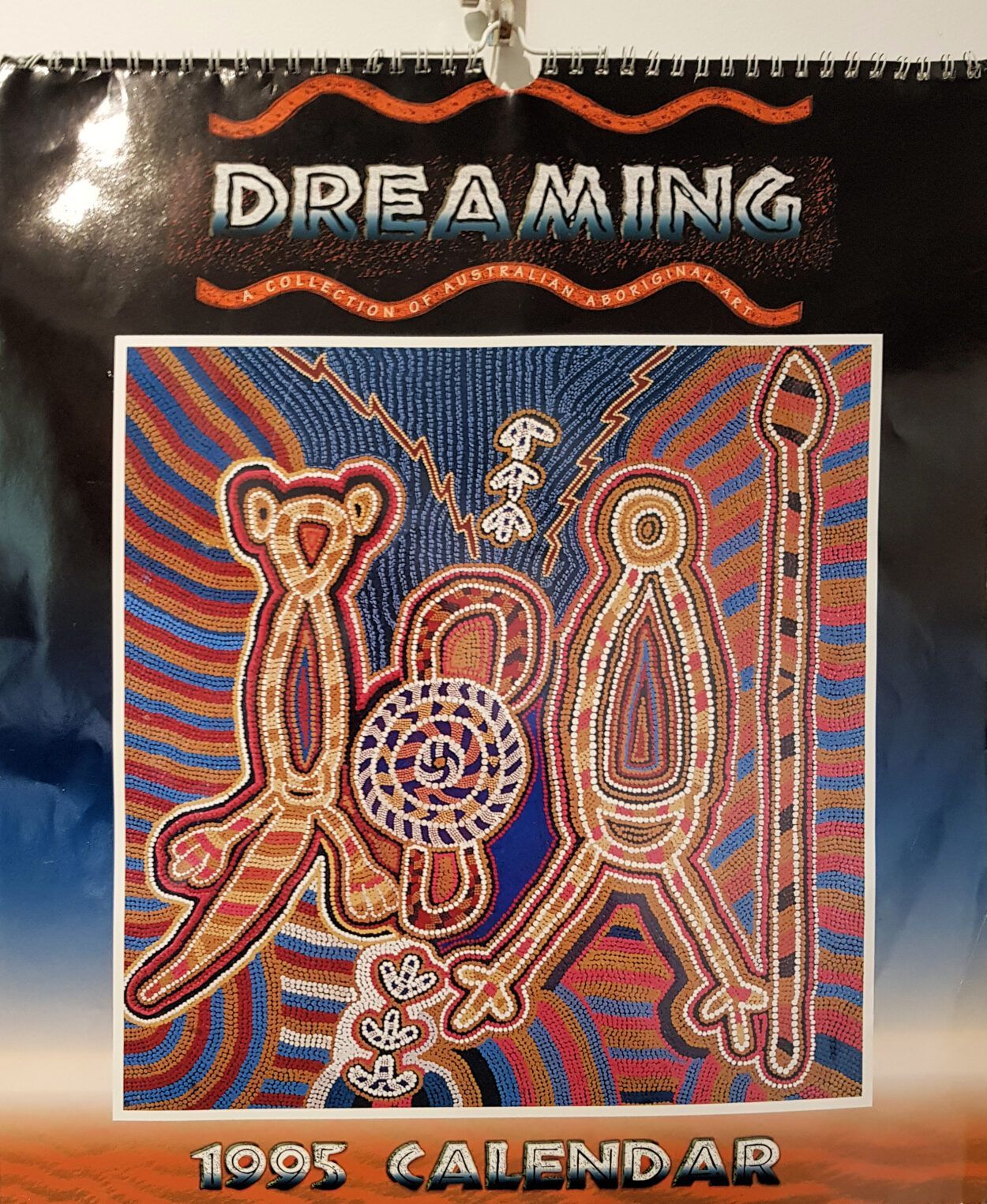
This painting depicts the artists’ own Dreaming home, a place sacred to Emu and Kangaroo ancestors at Lake Mackay in the Gibson Desert. The emus travelled following the waterholes in the desert. When a long drought came, the emu men pierced the clouds with their spears to make rain and as it fell it formed a great lake. When the rain ceased, the water sank beneath the desert leaving behind the salt lake, Lake Mackay, shown as the central circle. Figures of the emu and kangaroo are drawn, and they are also represented as U shapes seated beside the water. Emu tracks lead to and from the water and the spear on the right of the painting has been used to form the lightning show overhead.






